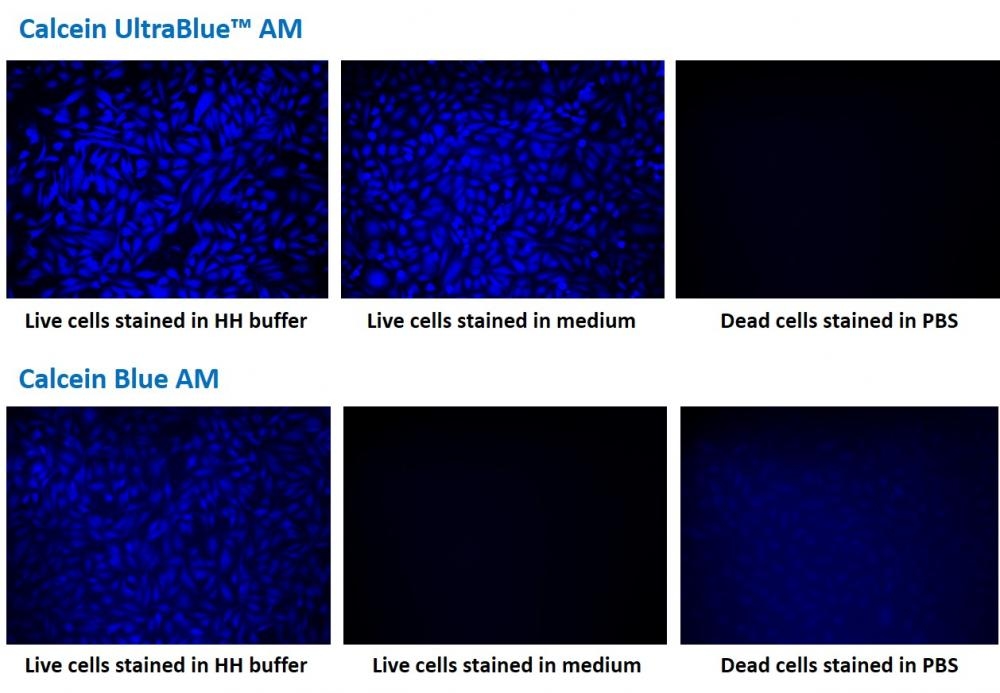Calcein UltraBlue™ AM
Calcein UltraBlue™ AM is a cell-permeable version of Calcein UltraBlue™. Upon getting into live cells the weakly fluorescent Calcein UltraBlue™ AM is hydrolyzed into Calcein UltraBlue™ that has the excitation/emission maxima similar to those of Calcein Blue, DAPI, Hoechst and AMCA. This exceptional spectral separation from the typical green and red fluorophores (such as FITC, TMR and Texas Red) provides additional options for multiplexing experiments. Calcein UltraBlue™ has similar spectral properties to those of Calcein Blue. However, compared with Calcein Blue, Calcein UltraBlue™ has higher photostability and stronger fluorescence intensity at physiological pH, making it a more robust fluorescent probe than Calcein Blue.


| Catalog | Size | Price | Quantity |
|---|---|---|---|
| 21908 | 10x50 ug | Price |
Physical properties
| Molecular weight | 802.68 |
| Solvent | DMSO |
Spectral properties
| Excitation (nm) | 359 |
| Emission (nm) | 458 |
Storage, safety and handling
| H-phrase | H303, H313, H333 |
| Hazard symbol | XN |
| Intended use | Research Use Only (RUO) |
| R-phrase | R20, R21, R22 |
| Storage | Freeze (< -15 °C); Minimize light exposure |
| UNSPSC | 12352200 |
Instrument settings
| Flow cytometer | |
| Excitation | 350/405 nm laser |
| Emission | 450/40 nm filter |
| Instrument specification(s) | Pacific Blue channel |
| Fluorescence microscope | |
| Excitation | DAPI filter set |
| Emission | DAPI filter set |
| Recommended plate | Black wall/clear bottom |
| Fluorescence microplate reader | |
| Excitation | 360 |
| Emission | 450 |
| Cutoff | 420 |
| Recommended plate | Black wall/clear bottom |
| Instrument specification(s) | Bottom read mode |
Documents
Contact us
| Telephone | |
| Fax | |
| sales@aatbio.com | |
| International | See distributors |
| Bulk request | Inquire |
| Custom size | Inquire |
| Technical Support | Contact us |
| Request quotation | Request |
| Purchase order | Send to sales@aatbio.com |
| Shipping | Standard overnight for United States, inquire for international |
Page updated on January 23, 2025

